#SIEGE 1983
Explore tagged Tumblr posts
Text


REINTERPRETING A WEST MASS HARDCORE CLASSIC -- WHICH ONE WORE IT BETTER?
PIC(S) INFO: Spotlight on a little '80s hardcore reinterpretation -- reinventing the flyer design for SIEGE (headlining, apparently), with band's DEEP WOUND, DA STUPIDS, D.Y.S., and LAST RIGHTS (a rare appearance by these guys), performing live at the Greenfield Grange (community center), Greenfield, MA, on Friday November 4. 1983. Reinterpreted artwork by @armaguest, c. 2022.
Source: www.picuki.com/media/2851023315323678299.
#SIEGE band#DEEP WOUND band#STUPIDS#Punk rock#LAST RIGHTS band#Boston punk#DEEP WOUND 1983#DEEP WOUND#SIEGE#SIEGE 1983#Hardcore punk#American Style#D.Y.S.#D.Y.S. band#DA STUPIDS#Punk flyers#Punk gigs#Proto-blastcore#Proto-grindcore#80s hardcore#80s hardcore punk#Graphic Art#Proto-fastcore#Graphic Design#80s Music#Boston hardcore#80s punk#STUPIDS band#Show flyers#Gig flyers
1 note
·
View note
Text
This Dark Red Spencer is worn on Nicola Pagett as Elizabeth Fanschawe in Frankenstein: The True Story (1973) and worn on Jackie Smith-Wood as Mary Crawford in Mansfield Park 1983 and worn again on Amira Casar as Catherine in Sharpe's Siege (1997)
Credit: iphpbb



#recycled costumes#Frankenstein: The True Story (1973)#mansfield park 1983#Jackie Smith-Wood#mary crawford#Sharpe's Siege (1997)#Amira Casar#Catherine#period drama#historical drama#costume drama#reused costume#reused costumes#costumes#jane austen#perioddramasource#dramasource
1 note
·
View note
Text
Since I haven’t seen anything about it on Tumblr yet;
For around 12 hours now, IDF forces have been raiding and sieging Al Shifa hospital in South Gaza. If you know anyone stuck in Gaza who’s been injured, had family who was injured or is medical staff, odds are they were taking refuge in/around Al Shifa. Accurate reports on casualties/wounded are hard to come across at the moment, but there’s video of IOF forces firing at patients and hospital staff and “trying to kill anyone who moves” [al jazeera].
If you weren’t aware; Al Shifa is the largest hospital in Gaza, and it was their departing ambulance convoy who were struck by IOF air strike on November 3rd. The hospital is well over its 700 bed capacity and has been asking desperately for supplies and fuel for weeks, after IOF destroyed their solar panels on Nov 6 and put the entire facility on backup generators.
There are a staggering amount of injured Palestinians and newborn babies in that hospital who cannot be moved from their wards, and are in critical danger without care. Nurses have been forced to either flee or stay behind and risk enemy fire.
It’s worth noting that despite Israeli claims Al Shifa is sitting on top of a Hamas-run bunker and the hospital is a front, the only tunnels they’ve found appear to be the tunnels built BY the IOF in 1983. The ‘terrified Palestinian nurse in Al Shifa’ video from 4 days ago, where a young covered woman appears to cry about Hamas forces in the hospital, is almost definitely Israeli influencer Hannah Abutbul in a bad disguise. Despite this being a ‘targeted operation’ Israeli spokespeople have not been clear on where exactly they think Hamas is operating out of in the enormous complex, and IOF radio reveals there’s been no evidence found of Israeli hostages.
This is a HOSPITAL, full of injured people, mourning families and children being cared for by hospital staff and volunteers.
The real ‘reason’ for the assault becomes obvious when you see footage of IOF soldiers marching the Israeli flag to the top of the hospital. Al Shifa was a conquest for Israel, a humiliation for surviving Palestinians and a message to the region. They did not like a facility that existed outside of their control, that put hope in the hearts of the people they’re trying to slaughter, and so they attacked it.
If you are able to join the Cairo Convoy and march on Rafah, PLEASE GO. If not, PLEASE SPREAD AWARENESS.

2K notes
·
View notes
Text
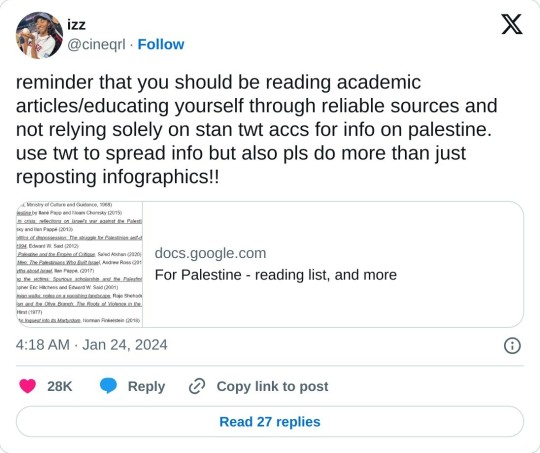

A copy of the first reading list, if you dislike clicking on Google docs links:
The liberal news media is working overtime to silence Palestinian voices. As we sit thousands of miles away, witnessing the massacre through social media, the least we can do is educate ourselves and work to educate others. Apartheid threatens all of us, and just to reiterate, anti-Zionism ≠ antisemitism.
Academic Works, Poetry and Memoirs
The Revolution of 1936-1939 in Palestine: Background, Details, and Analysis, Ghassan Kanafani (1972)
Palestinians: From Peasants to Revolutionaries, Rosemary Sayegh (1979)
Popular Resistance in Palestine: A History of Hope and Empowerment, Mazin Qumsiyeh (2011)
My Life in the PLO: The Inside Story of the Palestinian Struggle, Shafiq al-Hout and Jean Said Makdisi (2019)
My People Shall Live, Leila Khaled (1971)
Poetry of Resistance in Occupied Palestine, translated by Sulafa Hijjawi (Baghdad, Ministry of Culture and Guidance, 1968)
On Palestine by Ilan Pappé and Noam Chomsky (2015)
Gaza in Crisis: Reflections on the US-Israeli War Against the Palestinians, Noam Chomsky and Ilan Pappé (2013)
The Politics of Dispossession: The Struggle for Palestinian Self-Determination, 1969-1994, Edward W. Said (2012)
Queer Palestine and the Empire of Critique, Sa’ed Atshan (2020)
Stone Men: The Palestinians Who Built Israel, Andrew Ross (2019)
Ten Myths About Israel, Ilan Pappé (2017)
Blaming the Victims: Spurious Scholarship and the Palestinian Question, Christopher Eric Hitchens and Edward W. Said (2001)
Palestinian Walks: Notes on a Vanishing Landscape, Raja Shehadeh (2010)
The Gun and the Olive Branch: The Roots of Violence in the Middle East, David Hirst (1977)
Gaza: An Inquest into Its Martyrdom, Norman Finkelstein (2018)
Fateful Triangle: The United States, Israel and the Palestinians, Noam Chomsky (1983)
Israel and Palestine: Reappraisals, Revisions, Refutations, Avi Shlaim (2010)
Politicide: Ariel Sharon’s War Against the Palestinians, Baruch Kimmerling (2006)
The Holocaust Industry: Reflections on the Exploitation of Jewish Suffering, Norman G. Finkelstein (2015)
Light in Gaza: Writings Born of Fire, Jehad Abusalim (2022)
Nakba: Palestine, 1948, and the Claims of Memory, Ahmad H. Sa’di and Lila Abu-Lughod (2007)
Peace and its discontents: Essays on Palestine in the Middle East peace process, Edward W. Said (2012)
Three Poems by Yahya Hassan
Articles, Papers & Essays
“Palestinian history doesn’t start with the Nakba” by PYM (May, 2023)
“What the Uprising Means,” Salim Tamari (1988)
“The Palestinians’ inalienable right to resist,” Louis Allday (2021)
“Liberating a Palestinian Novel from Israeli Prison,” Danya Al-Saleh and Samar Al-Saleh (2023)
Women, War, and Peace: Reflections from the Intifada, Nahla Abdo (2002)
“A Place Without a Door” and “Uncle Give me a Cigarette”—Two Essays by Palestinian Political Prisoner, Walid Daqqah (2023)
“Live Like a Porcupine, Fight Like a Flea,” A Translation of an Article by Basel Al-Araj
Films & Video Essays
Fedayin: Georges Abdallah’s Fight (2021)
Naila and the Uprising (2017)
Off Frame AKA Revolution Until Victory (2015)
Tell Your Tale Little Bird (1993)
The Time That Remains (2009)
“The Present” (short film) (2020)
“How Palestinians were expelled from their homes”
Louis Theroux: The Ultra Zionists (2011)
Born in Gaza (2014)
5 Broken Cameras (2011)
Little Palestine: Diary of a Siege (2021)
Al-Nakba: The Palestinian catastrophe - Episode 1 | Featured Documentary
Organisations to donate to
Palestine Red Crescent Society - https://www.palestinercs.org/en
Anera - https://support.anera.org/a/palestine-emergency
Palestinian American Medical Association - https://palestinian-ama.networkforgood.com/projects/206145-gaza-medical-supplies-oct-2023
You First Gaza - https://donate.gazayoufirst.org/
MAP - Medical Aid for Palestinians - https://www.map.org.uk/donate/donate
United Nations Relief and Works Agency - https://donate.unrwa.org/-landing-page/en_EN
Palestine Children’s Relief Fund - https://www.pcrf.net/
Doctors Without Borders - https://www.doctorswithoutborders.org/what-we-do/where-we-work/palestine
AP Fact Check
https://apnews.com/article/israel-hamas-gaza-misinformation-fact-check-e58f9ab8696309305c3ea2bfb269258e
This list is not exhaustive in any way, and is a summary of various sources on the Internet. Please engage with more ethical, unbiased sources, including Decolonize Palestine and this list compiled by the Palestinian Youth Movement.
394 notes
·
View notes
Text
If I held that wish baby, I would wish that Russell T Davies never returned to Doctor Who
RTD2 has been a colossal mess. Last season was maybe the worst series the show has ever had, with the only truly good episode being Rogue. After The Empire of Death, I thought I was done with the show. Then I killed time by watching Joy to the World on Boxing Day and I thought I was done with the show. But on my quest to show my girlfriend Doctor Who, I thought hey it might be an idea to do the new stuff just so she knows why I don't like it. And guess what we found?
We both really liked this series. The Robot Revolution was a super fun camp introduction to the season, with Belinda instantly being ten times more of a character than Ruby Bloody Sunday was. Lux was creatively unique and even though I wasn't a huge fan of it, it was a big swing which I really enjoyed it taking. The Well was a surprisingly great base-under-siege sequel to Midnight, something I never thought could happen. Lucky Day touched on really interesting themes and emotional beats even if it didn't stick the landing. The Story and the Engine was absolutely fantastic, pure joy and the most original episode in all of Doctor Who. And then we got the Interstellar Song Contest - an episode with incredible production values but god awful internal politics.
And here we are. Wish World, a story has some real interesting meta commentary of conservative power-structures that suppress people who don't fit in with the patriarchal worldview, how the world the right-wing strive to get back never really existed, and they have to ignore literal holes in their philosophy for their fiction to make sense. The production design is superb and it does look lush, with redressings of sets in super clever ways. On a production design and on a commentary level it is better than last year’s first part of the finale, but it left me feeling nothing. It left me feeling very little hope for The Reality War. I've been let down before by this show, and been let down by you, Russell. Surely you won't do that again.
Well Russell, fool me once shame on me, fool me twice? Fuck you.
The Reality War. What a heap of absolute piss. There's something truly incestous about the show now. This god-damn boys club that's had its claws in the show since the 90's is still here, and it refuses to progress. When the show returned in 2005, Russell was on record saying the kids watching the show in twenty years would be running it, they would be Doctor Who. 20 years later the old bugger is still here. And I have to wonder, was it worth it? Is all this worth it?
The MCU-ification of the show - and all media, let's be honest - is a plague. I don't mind the deal with Disney, I don't mind the lil mid-credit scenes I guess. What I do mind is how the show is being made as content and that's it. It's jangly keys tv. It's not a show, it's not made as a production. It's made out of legal obligation. This show is being made for ten year olds who have been watching the show for forty five years. It's made so broadly and yet so fucking niche it's for nobody. I enjoy lil cameos here and there, I enjoy lil references to silly little lore. What I hate is building entire episodes - nay, seasons - off references to decade old plot points that haven't been referenced since 1983. Oh, speaking of which...
Susan Foreman. Hi Susan. I love Susan. Why were you here? Or specifically, why weren't you here? If I had a nickel for each series of Doctor Who which built up the big return of The Doctor's first companion, only for her to not actually appear, I'd have two nickels. Which isn't a lot but it's weird it not only happened twice, but in back to back seasons no less. Her cameo in Interstellar Song Contest was nice, but it amounted to nothing. Why was she here? Who was she for? The Fugitive Doctor's cameo in Story and the Engine was nice, but amounted to nothing more than jangly keys. The Thirteenth Doctor's cameo here amounted to nothing because she pops in, and it's lovely to see her again, but her whole cameo only existed for one reason - to give me vindication on how good her era actually was and how no one fucking believed me. We had it so good, man
The Rani - why? She's a character that exists only to be The Master-lite. I do like her, but she's often just a less interesting villain archetype. She's camp, she's silly, but that's kinda about it. I'm glad her grand return happened so we can stop with the "oooh the Rani is coming back" speculation every damn year, but god almighty what was this? Mrs Flood is the epitome of making it up as you go along. There's no arc, there's no actual thinking things through. Go back and watch her first appearances in Season One - she's clearly not The Rani. She just exists to be a buzzword so people can make lore videos about. "Ooh, are you not excited this character who hasn't appeared since The Doctor was Scottish five times ago is coming back??"
No. Because I care about writing. I care about plotting. I care about this show. Well, fuck me. Because if I had a nickel for each time a season finale brought back a legacy character who aspired to be a God, reduced his character to just being another boring God, with a CGI body of a dog, I'd have two nickels. Which isn't a lot but it's weird it's happened twice... two seasons in a row. Why is Omega here and why is he like this? He got Sutekh'd. Holy fuck. How was this allowed to happen.
Why is there no story? Why is it all fluff and waffle. And when there is a story, about the Doctor having a daughter and how if they fix the world she disappears from time, why does it not matter? They pretend it does, but it not only is obviously a reshoot but it clearly lacks all the emotional weight of times long gone. You cannot tell me RTD2 was made to be accessible for new fans, and at the same time mention Looms in the same sentence. Because Looms are canon now. LOOMS. FUCKING LOOMS. The most insane and worst part of 90's Who Lore. Hey, remember that time the Time Lords got cursed by a witch and made them sterile? No? Well that's canon now. Oh, and bi-generation was explained as something Time Lords can do to reproduce, and not actually a one off magical event based on a Time Lord myth. WHAT THE FUCK REASONING IS THAT FOR THAT ALREADY AWFUL IDEA???? The Doctor having children was such a huge part of the show in RTD1, and how he lost them (in the Time War or not) was super impactful. But now he's retconned his own era - the Doctor never had kids because he's sterile but Susan... exists...?
Susan is a real weird part of the show because she existed pre-all this lore about The Doctor and the Time Lords and regeneration came about. He left her on an alien world to live a life of her own, and said he would come back for her. He never did. His granddaughter. But because of all the new lore over the years, her place in the show was left super unclear. Was she a Time Lord? Could she regenerate? Would she age like a human or a Gallifreyan? Well fuck you, because now she's not even the Doctor's grandkid. I don't want those answers to be explored really, because exploring too much of the Doctor's past could be damaging, and damning in Susan's case. But the answer is now no, she's not even his grandkid, is fucking insane to me.
And look, nostalgia is a dangerous thing. Nostalgia is a really powerful tool but it's remembering a past that never truly existed, it's the memories of past events that should stay that. And it's always good to remember. But that same boys club running the show for the past 20+ years refuse to let go of nostalgia. Because Ncuti is gone. And Billie Piper is the next Doctor Who
I fucking mean this, that is the single choice that has forever broken the show. Hey, Doctor Who is Rose Tyler now. Rose Tyler, his ex, who he last saw hundreds and thousands of years ago and six regenerations ago. We've had five Doctor Who's since David Tennant (first) left the TARDIS. And Rose has not been relevant in the show since 2009. Why are we still doing this? Beyond the optics of regenerating into his ex, beyond the nostalgia-baiting, I have to ask. Does anyone even care about Rose Tyler like this anymore? I have no hope for the future of the show, because it refuses to let go of the past.
And poor Ncuti. I feel so bad for him. He was so hard-done by. Two seasons of poor scripts, awful plotting, negative character arc. He came in with nat-20 charisma and I love him for that, and in this season he got to pull back the layers a little more and have him be a more complex character. All for it to come undone here. The best Doctor who deserved better; he's joined that pantheon alongside Colin Baker, Paul McGann, Peter Capaldi, and Jo Martin. The only Dalek appearance in his era was a reused clip from Day of the Daleks (which, by the way, was a clip from the special edition that featured new Dalek voices by Nicholas Briggs, which means the original serial isn't canon but the special edition is? Oh my god, Russell T Davies is the George Lucas of Doctor Who...) The only Cyberman appearance in his era was in a comic strip. No, we're not doing old baddies unless we're turning them into big dogs. No, we have whole new baddies and monsters! Like... a Nazi, a victim of a genocide who is villainised to the extent the Doctor joins the cause to kill him, and a monster made of snot. WOW, SO INCREDIBLE THERE
There is no sauce here. Nothing special. The directing and blocking in this episode was truly awful. The lighting flat as a pancake. Insane uses of characters. Anita from that god awful Christmas special stands there as a doorstop and says nothing for the entire episode. They throw the main companion into a literal fucking box for half the episode and she does nothing. Rose, Donna's transgender daughter is also here. And again, she does nothing (at least this time she did more than only look at a bloody iPad though). Like,,, wow, go girlies!! Give us NOTHING!!!
Also it's insane that the optics of the story where a fascist creates an alt-timeline where the men go to work and the women stay at homes to look after the babies, only for the resolution of the story to have the main female character stay in the sci-fi cube. Now that's what I call feminism. Reducing a female character to just being a mother. Belinda wanted to get home all this time because she was an independent woman who had a life of her own to lead, with zero set up of her wanting to start a family. She even hated the idea of being Mrs, of being seen as incomplete if she didn’t adhere to a family unit. But no, the Doctor commits suicide to change time and make her a single mother and rewrite her entire life. What the fuck. Also insane that Anita is a pregnant woman, yet her whole function in saving the day is to stay standing for uncomfortably long. It’s not like pregnant women need major physical support or anything. Fuck off. The gender politics of this episode Jesus fucking Christ.
It’s truly fucked up. Why did no one stop this? Poppy getting erased from time, The Doctor awkwardly giving up his life to save his and Belinda's daughter, only for her to come back and re-write Belinda's entire timestream so she was a single mother. Because in this story, women are just for breeding or something?? Wtf is that about. It's insane that the Doctor died like this even. On paper I love the Doctor giving up his life to save one person. That's so so good and something that has been done before, and even in this era the idea of one person being missing is so heartbreaking and the Doctor would do anything to remedy that. But the emotional and thematic beat of the Doctor finally having a biological child (which is a heap of piss but let's go along with it for a moment) is completely gone because no, he doesn't have a kid. Poppy doesn’t matter because her life got completely rewritten too. We don’t even meet her dad. Fuck you.
This has been a whole ramble of a review, and I have so so many more thoughts on it. This is entirely unstructured, but I'm disappointed. My girlfriend Jane is disappointed. She's a pathological enjoyer of media, she's somebody who will find the good in anything and love it for that (is that why she's dating me, chat?) and she hated it. I hated it. And you should hate this too.
If 1980's Doctor Who was not worth saving, this shit isn't either. I said the same last year, and I'll say it again. I hope Disney pulls out. Doctor Who deserves better than Bad Wolf and Russell T Davies.
Sack Russell T Davies, sack Jane Tranter, sack Phil Collinson, sack Julie Gardner, sack Murray Gold. And then I'll come back to the show...
#Doctor who#doctor who spoilers#dw spoilers#doctor who is bad now#rtd#ncuti gatwa#billie piper#dr who#fifteenth doctor#sixteenth doctor#tardis#doctor who review#dw
31 notes
·
View notes
Text
The new globalism is global labor
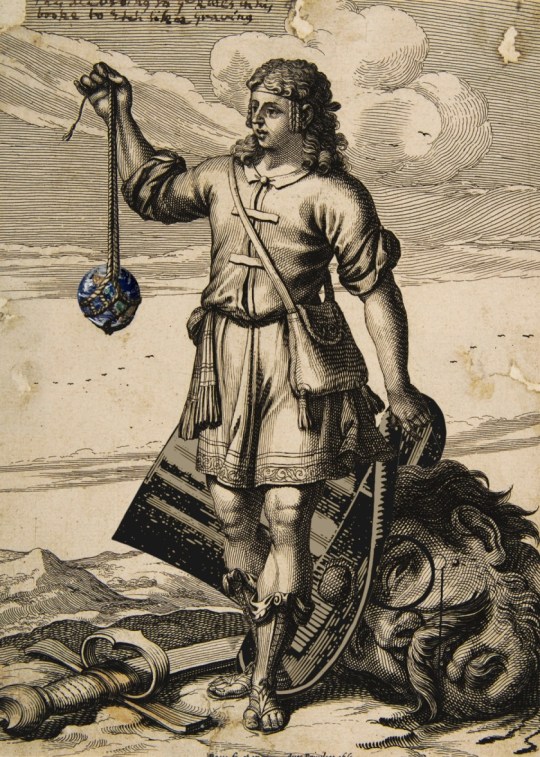
For the rest of May, my bestselling solarpunk utopian novel THE LOST CAUSE (2023) is available as a $2.99, DRM-free ebook!

Depending on how you look at it, I either grew up in the periphery of the labor movement, or atop it, or surrounded by it. For a kid, labor issues don't really hold a lot of urgency – in places with mature labor movements, kids don't really have jobs, and the part-time jobs I had as a kid (paper route, cleaning a dance studio) were pretty benign.
Ironically, one of the reasons that labor issues barely registered for me as a kid was that my parents were in great, strong unions: Ontario teachers' unions, which protected teachers from exploitative working conditions and from retaliation when they advocated for their students, striking for better schools as well as better working conditions.
Ontario teachers' unions were strong enough that they could take the lead on workplace organization, to the benefit of teachers at every part of their careers, as well as students and the system as a whole. Back in the early 1980s, Ontario schools faced a demographic crisis. After years of declining enrollment, the number of students entering the system was rapidly increasing.
That meant that each level of the system – primary, junior, secondary – was about to go through a whipsaw, in which low numbers of students would be followed by large numbers. For a unionized education workforce, this presented a crisis: normally, a severe contraction in student numbers would trigger layoffs, on a last-in, first-out basis. That meant that layoffs loomed for junior teachers, who would almost certainly end up retraining for another career. When student numbers picked up again, those teachers wouldn't be in the workforce anymore, and worse, a lot of the senior teachers who got priority during layoffs would be retiring, magnifying the crisis.
The teachers' unions were strong, and they cared about students and teachers, both those at the start of their careers and those who'd given many years of service. They came up with an amazing solution: "self-funded sabbaticals." Teachers with a set number of years of seniority could choose to take four years at 80% salary, and get a fifth year off at 80% salary (actually, they could take their year off any time from the third year on).
This allowed Ontario to increase its workforce by about 20%, for free. Senior teachers got a year off to spend with their families, or on continuing education, or for travel. Junior teachers' jobs were protected. Students coming into the system had adequate classroom staff, in a mix of both senior and junior teachers.
This worked great for everyone, including my family. My parents both took their four-over-five year in 1983/84. They rented out our house for six months, charging enough to cover the mortgage. We flew to London, took a ferry to France, and leased a little sedan. For the next six months, we drove around Europe, visiting fourteen countries while my parents homeschooled us on the long highway stretches and in laundromats. We stayed in youth hostels and took a train to Leningrad to visit my family there. We saw Christmas Midnight Mass at the Vatican and walked around the Parthenon. We saw Guernica at the Prado. We visited a computer lab in Paris and I learned to program Logo in French. We hung out with my parents' teacher pals who were civilian educators at a Canadian Forces Base in Baden-Baden. I bought an amazing hand-carved chess set in Seville with medieval motifs that sung to my D&D playing heart. It was amazing.
No, really, it was amazing. Unions and the social contract they bargained for transformed my family's life chances. My dad came to Canada as a refugee, the son of a teen mother who'd been deeply traumatized by her civil defense service as a child during the Siege of Leningrad. My mother was the eldest child of a man who, at thirteen, had dropped out of school to support his nine brothers and sisters after the death of his father. My parents grew up to not only own a home, but to be able to take their sons on a latter-day version of the Grand Tour that was once the exclusive province of weak-chinned toffs from the uppermost of crusts:
https://en.wikipedia.org/wiki/Grand_Tour
My parents were active in labor causes and in their unions, of course, but that was just part of their activist lives. My mother was a leader in the fight for legal abortion rights in Canada:
https://www.flickr.com/photos/doctorow/8882641733
My dad was active in party politics with the New Democratic Party, and both he and my mother were deeply involved with the fight against nuclear arms proliferation, a major issue in Canada, given our role in supplying radioisotopes to the US, building key components for ICBMs, testing cruise missiles over Labrador, and our participation in NORAD.
Abortion rights and nuclear arms proliferation were my own entry into political activism. When I was 13, I organized a large contingent from my school to march on Queen's Park, the seat of the Provincial Parliament, to demand an end to Ontario's active and critical participation in the hastening of global nuclear conflagration:
https://www.flickr.com/photos/doctorow/53616011737/
When I got a little older, I started helping with clinic defense and counterprotests at the Morgentaler Clinic and other sites in Toronto that provided safe access to women's health, including abortions:
https://www.cbc.ca/news/canada/morgentaler-honoured-by-order-of-canada-federal-government-not-involved-1.716775
My teens were a period of deepening involvement in politics. It was hard work, but rewarding and fundamentally hopeful. There, in the shadow of imminent nuclear armageddon, there was a role for me to play, a way to be more than a passive passenger on a runaway train, to participate in the effort to pull the brake lever before we ran over the cliff.
In hindsight, though, I can see that even as my activism intensified, it also got harder. We struggled more to find places to meet, to find phones and computers to use, to find people who could explain how to get a permit for a demonstration or to get legal assistance for comrades in jail after a civil disobedience action.
What I couldn't see at the time was that all of this was provided by organized labor. The labor movement had the halls, the photocopiers, the lawyers, the experience – the infrastructure. Even for campaigns that were directly about labor rights – campaigns for abortion rights, or against nuclear annihilation – the labor movement was the material, tangible base for our activities.
Look, riding a bicycle around all night wheatpasting posters to telephone poles to turn out people for an upcoming demonstration is hard work, but it's much harder if you have to pay for xeroxing at Kinko's rather than getting it for free at the union hall. Worse, the demonstration turnout suffers more because the union phone-trees and newsletters stop bringing out the numbers they once brought out.
This was why the neoliberal project took such savage aim at labor: they understood that a strong labor movement was foundation of antiimperialist, antiracist, antisexist struggles for justice. By dismantling labor, the ruling class kicked the legs out from under all the other fights that mattered.
Every year, it got harder to fight for any kind of better world. We activist kids grew to our twenties and foundered, spending precious hours searching for a room to hold a meeting, leaving us with fewer hours to spend organizing the thing we were meeting for. But gradually, we rebuilt. We started to stand up our own fragile, brittle, nascent structures that stood in for the mature and solid labor foundation that we'd grown up with.
The first time I got an inkling of what was going on came in 1999, with the Battle of Seattle: the mass protests over the WTO. Yes, labor turned out in force for those mass demonstrations, but they weren't its leaders. The militancy, the leadership, and the organization came out of groups that could loosely be called "post-labor" – not in the sense that they no longer believed in labor causes, but in the sense that they were being organized outside of traditional labor.
Labor was in retreat. Five years earlier, organized labor had responded to NAFTA by organizing against Mexican workers, rather than the bosses who wanted to ship jobs to Mexico. It wasn't unusual to see cars in Ontario with CAW bumper stickers alongside xenophobic stickers taking aim at Mexicans, not bosses. Those were the only workers that organized labor saw as competitors for labor rights: this was also the heyday of "two-tier" contracts, which protected benefits for senior workers while leaving their junior comrades exposed to bosses' most sadistic practices, while still expecting junior workers to pay dues to a union that wouldn't protect them:
https://pluralistic.net/2021/11/25/strikesgiving/#shed-a-tier
Two-tier contracts were the opposite of the solidarity that my parents' teachers' union exhibited in the early 1980s; blaming Mexican workers for automakers' offshoring was the opposite of the solidarity that built transracial and international labor power in the early days of the union movement:
https://unionhall.aflcio.org/bloomington-normal-trades-and-labor-assembly/labor-culture/edge-anarchy-first-class-pullman-strike
As labor withered under a sustained, multi-decades-long assault on workers' rights, other movements started to recapitulate the evolution of early labor, shoring up fragile movements that lacked legal protections, weathering setbacks, and building a "progressive" coalition that encompassed numerous issues. And then that movement started to support a new wave of labor organizing, situating labor issues on a continuum of justice questions, from race to gender to predatory college lending.
Young workers from every sector joined ossified unions with corrupt, sellout leaders and helped engineer their ouster, turning these dying old unions into engines of successful labor militancy:
https://theintercept.com/2023/04/07/deconstructed-union-dhl-teamsters-uaw/
In other words, we're in the midst of a reversal of the historic role of labor and other social justice movements. Whereas once labor anchored a large collection of smaller, less unified social movements; today those social movements are helping bring back a weakened and fragmented labor movement.
One of the key organizing questions for today is whether these two movements can continue to co-evolve and, eventually, merge. For example: there can be no successful climate action without climate justice. The least paid workers in America are also the most racially disfavored. The gender pay-gap exists in all labor markets. For labor, integrating social justice questions isn't just morally sound, it's also tactically necessary.
One thing such a fusion can produce is a truly international labor movement. Today, social justice movements are transnational: the successful Irish campaign for abortion rights was closely linked to key abortion rights struggles in Argentina and Poland, and today, abortion rights organizers from all over the world are involved in mailing medication abortion pills to America.
A global labor movement is necessary, and not just to defeat the divide-and-rule tactics of the NAFTA fight. The WTO's legacy is a firmly global capitalism: workers all over the world are fighting the same corporations. The strong unions of one country are threatened by weak labor in other countries where their key corporations seek to shift manufacturing or service delivery. But those same strong unions are able to use their power to help their comrades abroad protect their labor rights, depriving their common adversary of an easily exploited workforce.
A key recent example is Mercedes, part of the Daimler global octopus. Mercedes' home turf is Germany, which boasts some of the strongest autoworker unions in the world. In the USA, Mercedes – like other German auto giants – preferentially manufactures its cars in the South, America's "onshore-offshore" crime havens, where labor laws are both virtually nonexistent and largely unenforced. This allows Mercedes to exploit and endanger a largely Black workforce in a "right to work" territory where unions are nearly impossible to form and sustain.
Mercedes just defeated a hard-fought union drive in Vance, Alabama. In part, this was due to admitted tactical blunders from the UAW, who have recently racked up unprecedented victories in Tennessee and North Carolina:
https://paydayreport.com/uaw-admits-digital-heavy-organizing-committee-light-approach-failed-them-in-alabama-at-mercedes/
But mostly, this was because Mercedes cheated. They flagrantly violated labor law to sabotage the union vote. That's where it gets interesting. German workers have successfully lobbied the German parliament for the Supply Chain Act, an anticorruption law that punishes German companies that violate labor law abroad. That means that even though the UAW just lost their election, they might inflict some serious pain on Mercedes, who face a fine of 2% of their global annual revenue, and a ban on selling cars to the German government:
https://pluralistic.net/2024/04/10/an-injury-to-one/#is-an-injury-to-all
This is another way reversal of the post-neoliberal era. Whereas once the US exported its most rapacious corporate practices all over the world, today, global labor stands a chance of exporting workers' rights from weak territories to strong ones.
Here's an American analogy: the US's two most populous states are California and Texas. The policies of these states ripple out over the whole country, and even beyond. When Texas requires textbooks that ban evolution, every pupil in the country is at risk of getting a textbook that embraces Young Earth Creationism. When California enacts strict emission standards, every car in the country gets cleaner tailpipes. The WTO was a Texas-style export: a race to the bottom, all around the world. The moment we're living through now, as global social movements fuse with global labor, are a California-style export, a race to the top.
This is a weird upside to global monopoly capitalism. It's how antitrust regulators all over the world are taking on corporations whose power rivals global superpowers like the USA and China: because they're all fighting the same corporations, they can share tactics and even recycle evidence from one-another's antitrust cases:
https://www.eff.org/deeplinks/2024/05/big-tech-eu-drop-dead
Look, the UAW messed up in Alabama. A successful union vote is won before the first ballot is cast. If your ground game isn't strong enough to know the outcome of the vote before the ballot box opens, you need more organizing, not a vote:
https://pluralistic.net/2023/04/23/a-collective-bargain/
But thanks to global labor – and its enemy, global capitalism – the UAW gets another chance. Global capitalism is rich and powerful, but it has key weaknesses. Its drive to "efficiency" makes it terribly vulnerable, and a disruption anywhere in its supply chain can bring the whole global empire to its knees:
https://pluralistic.net/2023/09/21/eight-and-skate/#strike-to-rule
American workers – especially swing-state workers who swung for Trump and are leaning his way again – overwhelmingly support a pro-labor agenda. They are furious over "price gouging and outrageous corporate profits…wealthy corporate CEOs and billionaires [not] paying what they should in taxes and the top 1% gaming the system":
https://www.americanfamilyvoices.org/_files/ugd/d4d64f_6c3dff0c3da74098b07ed3f086705af2.pdf
They support universal healthcare, and value Medicare and Social Security, and trust the Democrats to manage both better than Republicans will. They support "abortion rights, affordable child care, and even forgiving student loans":
https://prospect.org/politics/2024-05-20-bidens-working-class-slump/
The problem is that these blue-collar voters are atomized. They no longer meet in union halls – they belong to gun clubs affiliated with the NRA. There are enough people who are a) undecided and b) union members in these swing states to defeat Trump. This is why labor power matters, and why a fusion of American labor and social justice movements matters – and why an international fusion of a labor-social justice coalition is our best hope for a habitable planet and a decent lives for our families.

If you'd like an essay-formatted version of this post to read or share, here's a link to it on pluralistic.net, my surveillance-free, ad-free, tracker-free blog:
https://pluralistic.net/2024/05/20/a-common-foe/#the-multinational-playbook
#pluralistic#mercedes#germany#trustbusting#apple#eu#south korea#japan#uk#competition and markets authority#dma#dsa#germany supply chain act#alabama#bafa
213 notes
·
View notes
Text

Affiche Porsche Sieg : 1000 Kilomètres de Silverstone (1983). - source Heritage Auctions.
20 notes
·
View notes
Text
[“In 2022, the feminist scholar Claire Potter assured the world that “#MeToo activism has opened the door to a long-overdue recognition of Dworkin’s contributions,” and added that “her prose seizes even a hostile reader by the throat and refuses to let go”—as if this were a good thing. If her recommendations sound cruel, no matter—as Jennifer Szalai explained in her Dworkin encomium in the New York Times, “in wartime, no strategy is off the table.” A person might protest: Surely it matters most during war that strategies are off the table?
But for those who would say that “our” sex is literally under siege— as Lederer and Reisman said, in their crusade against female extinction—the effect is to justify any and all countermeasures. From inside the war room, those of us who persist in “seeking ecstasy on the battlefield” (as sex radicals Ellen DuBois and Linda Gordon put it in 1983) begin to look a bit like traitors to womankind. We are told it is wrong to imagine that one can taste any joyful, unalienated ways of embodying gender now, before the revolution. Or that, even if feminist heterosex is tastable, there’s no excuse for putting political focus there while the corpses of women are piling up.”]
sophie lewis, from enemy feminisms: terfs, policewomen, and girlbosses against liberation, 2025
24 notes
·
View notes
Text

And The Wounds Stand Witness
Arabic translation: Dr. Faiz Rashied Issa
And the wounds are witness
Memories of a doctor in the early days of the siege
Foreword by Dr. George Habash
General Union of Palestinian Writers and Journalists
General Secretariat
Artist: Marc Rudin/Jihad Mansour (1945-2023)
Circa 1983
#pflp#palestine#doctors#hospital seige#relevant#george habash#dr. faiz rashied issa#revolutionary art#poster#goes hard
46 notes
·
View notes
Text








One Second Of War (1983)
This book is about the Siege of Leningrad and 5 photo journalists who were there: Georgiy Konovalov, Nikolai Khandogin, Vsevolod Tarasevich, Nikolai Yanov and Boris Utkin. The book includes interviews, personal stories and plenty of photographs.
Hardcover, 238 pages, coated paper. Size 19.5 × 25 cm (7.6" × 9.9").
Available in my shop for $12 + $24 international registered shipping
SOLD
Message me if you want to buy this! Other items in my shop. I combine shipping. How to buy.
48 notes
·
View notes
Text




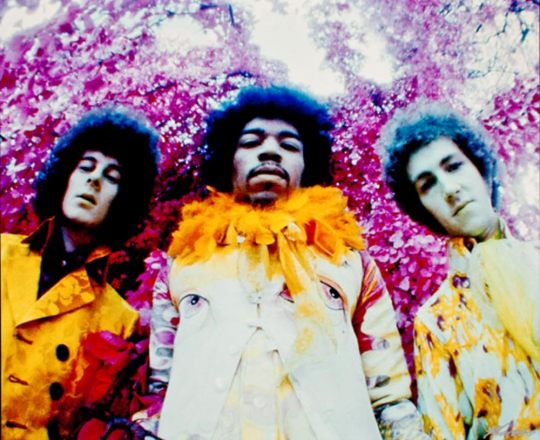
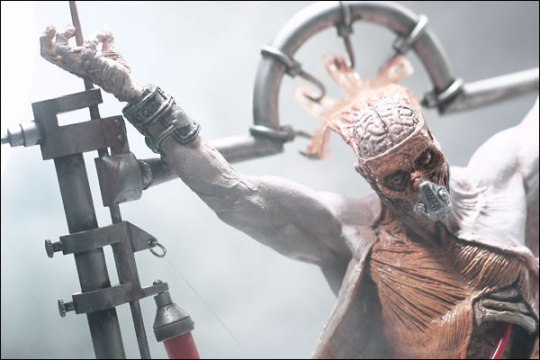
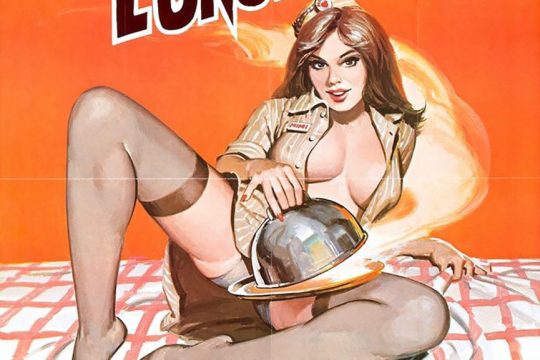

THE RETURN! -- RETURN OF THE "TUMBLR COVER PHOTO" SERIES!
PIC(S) INFO: Part 1 of 2 -- Spotlight on the first set in my ongoing series of Tumblr Cover Photos for the year 2024, and I've finally made up my mind that I will be continuing them, just not as fervently as I was last year. This set includes:
Rob Williams, blasting away as drummer for Weymouth, MA, hardcore punk/proto-blastcore band, SIEGE.
Variant head/helmet for Gentle Giant's 2011 San Diego Comic-Con exclusive "STAR WARS" Imperial Snowtrooper mini bust, after the legendary Ralph McQuarrie's unused concept art
The Lizard, Spidey supervillain, by Todd McFarlane, from "Amazing Spider-Man" Vol. 1 #313 (March 1989).
Japanese 2015 re-release movie poster for cult hip-hop/independent movie "Wild Style" (1983).
THE JIMI HENDRIX EXPERIENCE, as photographed by Karl Ferris for the U.S. release of 1967's "Are You Experienced."
Promotional image for Moribundi (action figure), from Clive Barker's "Tortured Souls" Series 2 by McFarlane Toys.
Partial poster art for the 1978 American sexploitation film "Hot Lunch."
Logo for Swedish hardcore/D-beat band TOTALITÄR
Sources: CVLT Nation, Vintage Posters (shop), McFarlane Toys, IMDb, Pinterest, X, Rebel Scum (blogspot), various, etc...
#Tumblr Cover Photos 2024#Cover Photos#Cover Photos 2024#Tumblr Cover Photos#TOTALITÄR#SIEGE band#STAR WARS#Imperial Snowtrooper#Ralph McQuarrie#Sexploitation Films#Super Seventies#THE JIMI HENDRIX EXPERIENCE 1967#Are You Experienced#Swedish D-beat#Proto-fastcore#Golden Age of hip-hop#Marvel Universe#Marvel Villains#Karl Ferris#80s hardcore#Hot Lunch 1978#Tortured Souls#WILD STYLE 1983#Concept Art#Psychedelia#Proto-blastcore#Original Trilogy#The Lizard#JIMI HENDRIX 1967#SIEGE
3 notes
·
View notes
Text



Israeli M50 in Lebanese Falangist service, knocked out in the Camille Chamoun Stadium during the Siege of Beirut, pictured in April 1983
23 notes
·
View notes
Text

Self Defense aka Seige (1983) A gay bar is hit by a group of sociopaths, and all the patrons are killed except for one man who escapes and takes refuge in an apartment occupied by a group of friends, who will do anything they can to protect him and survive the siege. The film was called “an unheralded landmark of Canadian B-film.” by Canuxploitation.com and is available for streaming on Darkroom.film under the Seige title.
10 notes
·
View notes
Note
In the non-existent chronology of Greek mythology, where do you like to put the separation myth of Zeus and Hera? In my my mind I always imagine it more at the beginning of their marriage before any of his major affairs.
The one from Boeotia or the one from Arcadia?
I'm really not sure about either, but I've read a suggestion that the separation that led to the Daidala festival could have been motivated by Athena's birth:
"The final question concerning Theban motives for the building program is how they may have used the myth of Hera Nympheuomene to their advantage. As we saw above, Pausanias relates how the Daidala festival arose from a domestic quarrel between Zeus and Hera, but he does not tell us what gave rise to the dispute. Rocchi (1989: 320-321) has suggested that it arose from Zeus's affair with Metis, … and the subsequent birth of Athena from his head. This interpretation is attractive, for it metaphorically suggests that Hera was temporarily afraid she would be displaced by Metis and Athena, the latter of course being the patron goddess of the Athenians, but then she was restored to her rightful position of honor beside Zeus. As Prandi (1982b, 1983, 1988: 22-24) points out, it may also be significant that the festival took place along the Asopos, the disputed borderline between Boiotia and Athens. The Thebans, then, could have exploited the myth to represent the return of Plataiai (Hera) back to the Boiotians and the restoration of Hera's honor at Plataiai beside her lord Zeus (the Thebans).59
All of these arguments complement Schachter's thesis (1981,1: 245) that the Thebans built the new stone temple and inn for the Heraion Sanctuary complex "as a political act," to counterbalance the only other large stone temple at Plataiai - the temple of Athena Areia.60 When we recall that the temple of Athena Areia was built from Plataiai's share of the booty after the Persian invasions of 490 and 479,61 battles in which the Thebans were forever castigated for having medized and in which the Plataian alliance with Athens was cemented further, much to the chagrin of the Thebans, then it is likely that the worship of Athena Areia at Plataiai, in a very real and spiritual sense, linked Plataiai with Athens and was one of the most obvious symbols of its atticizing. After the siege of Plataiai, when the Plataians pleaded for their lives to the Spartans on the basis of their common alliance against the Persians fifty years earlier and reminded the Spartans that the Thebans had medized, the Thebans countered by saying that their medization was involuntary, while the Plataians' atticizing was voluntary (Thuk. 3.64.5). We may postulate that the charge of atticizing extended into the realm of religion and the Thebans could have called this religious atticizing on the part of the Plataians a neglect of the pan-Boiotian worship of Hera, particularly if it is correct that after the Persian Wars the Plataians merely replaced the Persian-destroyed Heraion with a modest wooden complex while building a grander stone temple for Athena."
- THE SMALL AND GREAT DAIDALA IN BOIOTIAN HISTORY by Paul A. Iversen
In Homeric Hymn 3 to Apollo Hera also leaves Olympos out of anger and stays away for at least one year after Zeus gives birth to Athena. Also consider that in the version of the Daidala story related by Plutarch Zeus is advised how to get Hera back by Alalkomeneos, who in one tradition (Pausanias, Description of Greece 9.33.5) received Athena in his care and raised her, so the details would fit quite nicely.
Another possibility would be to place one of the separations at the point when Zeus had his affair with Niobe, the first mortal woman he slept with. There is no evidence for it, but I think it’s not implausible to assume that Hera could have felt greatly slighted considering 1) the fact that this was the first time he chose a non-divine woman to have children with and 2) the identity of the woman he chose. This interpretation would align Hera with the Argolid, however, rather than with either Boeotia or Arcadia, but if you don't mind combining different traditions like this then it could work.
11 notes
·
View notes
Text
The Top Twenty Books I Read in 2024
I finally remembered this!
The Power of the Dog by Thomas Savage (1967)
The Stepford Wives by Ira Levin (1972)
Call Me Ruth by Marilyn Sachs (1982)
The Marquis Who Mustn't by Courtney Milan (2023)
Out of Control by Norma Fox Mazer (1993)
The Fat Girl by Marilyn Sachs (1984)
Alexander Hamilton by Ron Chernow (2004)
Toxic by Sarah Ditum (2024)
The Long Winter by Laura Ingalls Wilder (1940)
Old Crimes by Jill McCorkle (2024)
Tracy Flick Can't Win by Tom Perrotta (2022)
The Sympathizer by Viet Thanh Nguyen (2015)
The Siege of Trencher's Farm by Gordon Williams (1969)
The Woman in Black by Susan Hill (1983)
Meet Me at the Fountain by Alexandra Lange (2022)
Small Things Like These by Claire Keegan (2020)
Sticks and Stones by Lynn Hall (1972)
Stranger with My Face by Lois Duncan (1981)
The Trouble with Wednesdays by Laura Nathanson (1986)
Steffie Can't Come Out to Play by Fran Arrick (1978)
6 notes
·
View notes
Text
Hier ist ein kleiner historischer Blick in den Rückspiegel von früher bis heute über den heutigen 16. Januar, als Aufstellung der Ereignisses:
16. Januar: Ein Blick auf bedeutende Ereignisse und Personen aus der Geschichte per Rückspiegel als Zusammenstellung aus Wikipädia Einträgen:
Der 16. Januar hat im Laufe der Jahrhunderte viele wichtige Momente hervorgebracht. Hier sind einige Schlüsselmomente der Geschichte, die an diesem Tag stattfanden:
14. Jahrhundert:
• 1330: Der schottische König Robert Bruce starb. Er führte Schottland im Unabhängigkeitskrieg gegen England und wurde ein Symbol für den Widerstand der Schotten. Sein Tod markierte das Ende einer Ära, aber seine Taten bleiben in der Geschichte unvergessen.
15. Jahrhundert:
• 1412: Geburt von Jeanne d’Arc, der berühmten französischen Nationalheldin. Sie führte die französischen Truppen zu wichtigen Siegen im Hundertjährigen Krieg und war später für ihre Glaubensfestigkeit und ihren Widerstand gegen England bekannt. Sie wurde 1431 als Märtyrerin verbrannt.
16. Jahrhundert:
• 1521: Der Wormser Reichstag begann, und Martin Luther wurde aufgefordert, seine Thesen zu widerrufen. Luther weigerte sich, und dies führte zu einem Schisma in der katholischen Kirche und zur Entstehung des Protestantismus. Dieser Moment prägte die religiöse Landschaft Europas entscheidend.
17. Jahrhundert:
• 1605: Veröffentlichung des ersten Kapitels von „Don Quijote“ von Miguel de Cervantes. Dieses Werk gilt als eines der bedeutendsten in der westlichen Literaturgeschichte. Cervantes’ humorvolle und tiefgründige Erzählung bleibt heute ein Klassiker.
18. Jahrhundert:
• 1777: Die Schlacht von Princeton im Amerikanischen Unabhängigkeitskrieg begann. General George Washington und seine Armee erzielten einen wichtigen Sieg gegen die britischen Truppen, was die Moral der amerikanischen Revolutionäre stärkte.
19. Jahrhundert:
• 1847: Die Schlacht von Buena Vista fand im Mexikanischen Krieg statt. Die US-Armee unter General Zachary Taylor besiegte die mexikanischen Truppen, was den Verlauf des Krieges zugunsten der USA wendete und letztlich zur Annexion von Teilen Mexikos führte.
20. Jahrhundert:
• 1919: Der Volstead Act trat in Kraft, der die Prohibition in den USA einleitete. Alkoholproduktion und -verkäufe wurden verboten, was zu einer Ära illegaler Alkoholgeschäfte und zum Aufstieg von kriminellen Organisationen wie der von Al Capone führte.
• 1983: Die erste YouTube-Videoaufnahme wurde an diesem Tag gemacht. Es war ein Meilenstein für die weltweite Entwicklung von Video-Plattformen. Dieses Ereignis war der Beginn einer neuen Ära der digitalen Medien, die Millionen von Menschen weltweit die Möglichkeit gab, ihre Videos zu teilen.
21. Jahrhundert:
• 2002: Bob Saget, der US-amerikanische Schauspieler und Komiker, der vor allem durch seine Rolle als Danny Tanner in der TV-Serie „Full House“ bekannt wurde, trat in New York City auf der Bühne auf. Es war eine seiner letzten Comedy-Shows, bevor er 2022 tragisch verstarb.
Zusammenfassung:
Der 16. Januar ist ein Tag, der viele bedeutende Ereignisse und Personen umfasst, von großen historischen Schlachten bis hin zu kulturellen Meilensteinen. Wenn du mehr über den ersten YouTube-Upload erfahren möchtest, schaue dir dieses YouTube-Video an, das den Moment einfängt, in dem alles begann: YouTube: The First Video Ever Uploaded - “Me at the zoo”.
Das zeigt uns, wie unterschiedlich der 16. Januar in der Geschichte sein kann, von Schlüsselmomenten in Kriegen bis hin zu der digitalen Revolution!
#Geschichte #Ereignisse #YouTube #MartinLuther #JeannedArc #cwg64d #BobSaget #Prohibition #SchlachtVonPrinceton #DonQuijote #oculiauris

3 notes
·
View notes